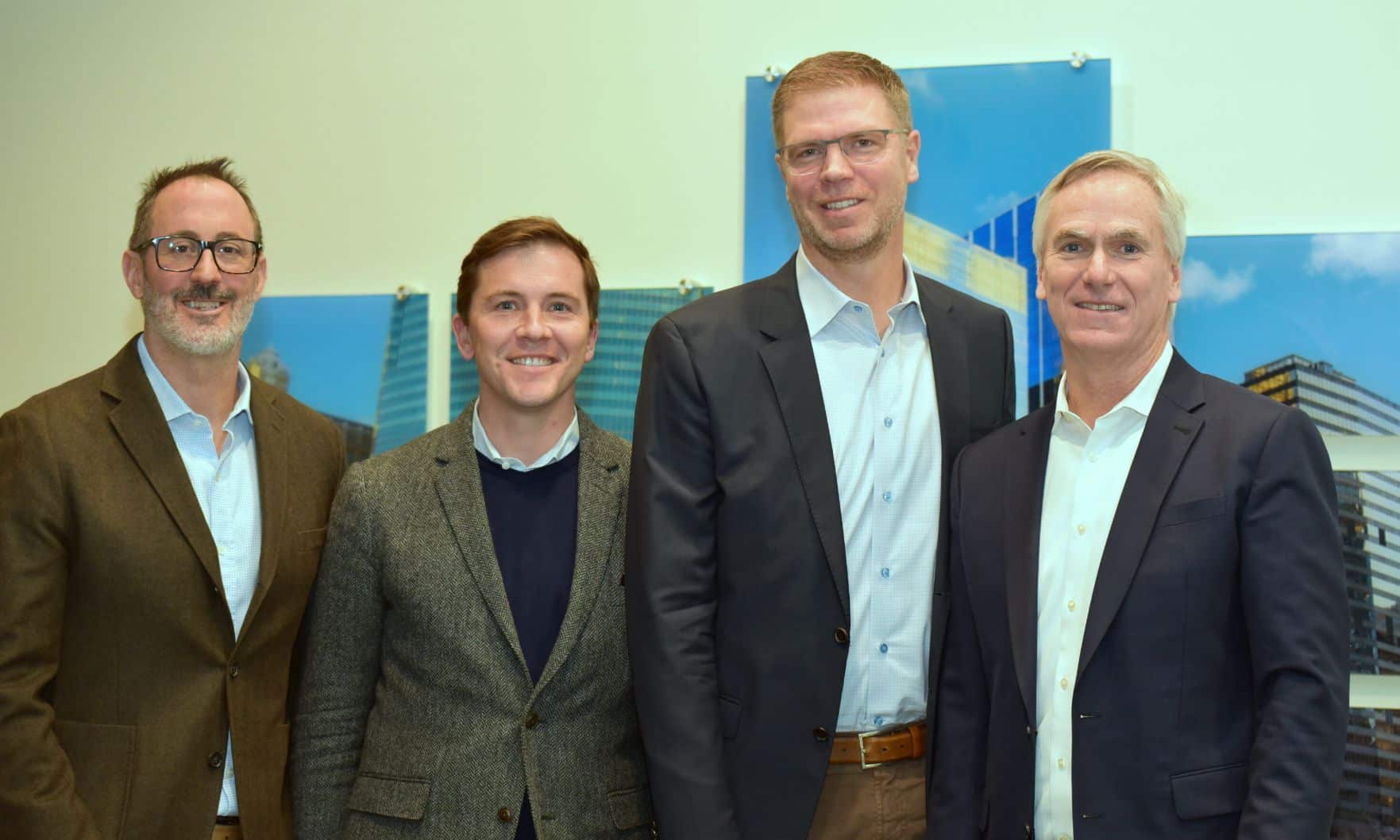Ever since its flow was reversed in 1900 — a first-of-its-kind engineering feat — the Chicago River has held opportunities for innovation this city. And though decades of industrialization left the waterway somewhat stagnant, fresh development is underway. Several large-scale projects are currently in the works.
Local experts gathered on Dec. 7 to discuss these in a highly anticipated “River Talk” forum at DePaul University. It was held by the college’s Real Estate Center and Chaddick Institute.
Rink Sinkular, senior managing director at the Chaddick Institute, moderated the event which featured a keynote address from Joseph Schwieterman, a director at the Chaddick Intitute, as well as a highly anticipated panel: “Transformative Development Projects Along the River.”
First, Schwieterman outlined nearly a hundred years of river history for attendees. As he explained, when Chicagoans think of the river today, architectural boat tours may come to mind, or the popular downtown Riverwalk. But that was not always the case.
But looking back to the 1950s, Schwieterman said, the river largely played a manufacturing role for Chicago. But the inception of Marina City, in 1959, was a nod toward the future. Though it would take several more decades for redevelopment along the river to intensify, the river’s mixed-use transformation accelerated throughout the 2000s — even more so after 2010.
“What’s causing this river renaissance? And what can we learn from it?” Schwieterman asked. He brought up Lincoln Yards, the massive, forthcoming development by Sterling Bay, as an example of how residential activity along the river is set to grow.
Panelist Dean Marks, managing principal of Sterling Bay, later delved into the details of what’s planned for Lincoln Yards, from its construction timeline to the overall mission of the space.
Perched along the North Branch of the Chicago River, Lincoln Yards is bound by the Kennedy Expressway to the west, Webster Avenue to the north, Clybourn Avenue to the east and North Avenue to the south. Upon completion, that’s 53 acres — 40% of which is slated for open space. Prior to development, much of this space had been sitting empty which “didn’t make sense” to Marks.
The original goal for Lincoln Yards was to connect some of Chicago’s most popular areas: Bucktown, Wicker Park and Lincoln Park. Since these neighborhoods are no longer very industrial, the development was imagined as a massive, mixed-use master plan with 11 acres of parkland, 6,000 residential units plus a “Steelyard” attraction for retail and entertainment.
These plans also include an extension of The 606 recreational trail, the addition of a bridge over Throop Street and, overall, a physical emphasis on the riverfront location. Although the whole of Lincoln Yards will not be finished for roughly 15 years, the now-completed building at 1229 W. Concord showcases a semi-naturalized river’s edge: a sustainable option that avoids erosion. Already, it’s attracting local wildlife — fitting, considering this new space is dedicated to the life sciences.
Tours of 1229 W. Concord were available the night before “River Talk” during a cocktail reception at the Lincoln Yards Experience Center, located in the old Firehouse.
Reflecting on the vast scale of the project, Marks recalled the original reversal of the Chicago River more than a century ago. “We don’t make little plans in Chicago,” he said. “It’s part of being a Chicagoan. You go forth and you put it out there.”
Other panelists shared equally confident perspectives on the future of development along the waterway. Ted Weldon, executive general manager of development at Lendlease, gave an update on progress at Southbank: Lendlease’s seven-acre, riverfront master plan. It currently includes The Reed and The Cooper, two luxury residential high-rises, plus a two-acre park and a riverwalk which links directly to the waterway.
Weldon described the steps his company took in order to integrate the river into Southbank. The riverwalk was elevated with natural materials then landscaped with self-sustaining prairie plants. Lendlease is also planning a water taxi stop, a kayak launch and an amphitheater all along river’s edge.
He said the project is a “once-in-a-lifetime development.”
Brian Atkinson, managing director at Hines, and Michael Ellich, senior vice principal at Related Midwest, also were featured in the panel. Atkinson offered a broader view of life along the river, explaining several Hines projects — among them, 321 N. Clark, 333 W. Wacker, Wolf Point and River Point — all of which were revitalized in recent years to further engage with the waterway.
Ellich, meanwhile, provided insight into progress on The 78: a 62-acre masterplan along the South Branch of the river, between downtown and Chinatown. In reference to Chicago’s 77 official neighborhoods, The 78, aims to present a whole new community area. Located on the site of a former railyard, its full build-out is expected three to four years from now.
Reflecting on these many riverfront enterprises, the four panelists reaffirmed their high hopes during a Q&A that followed the talk. “Chicago is the greatest city in the world,” Marks said. “And if it isn’t, it has the potential to be.”
